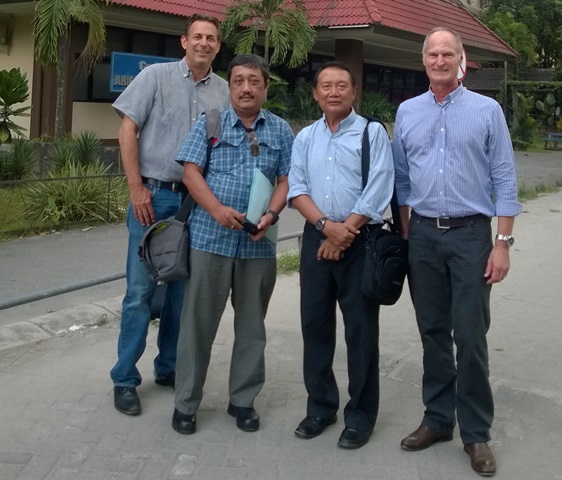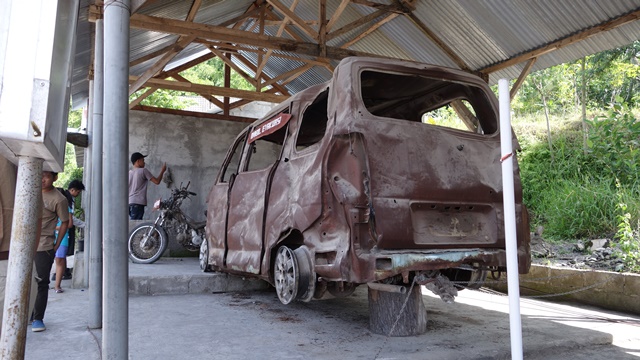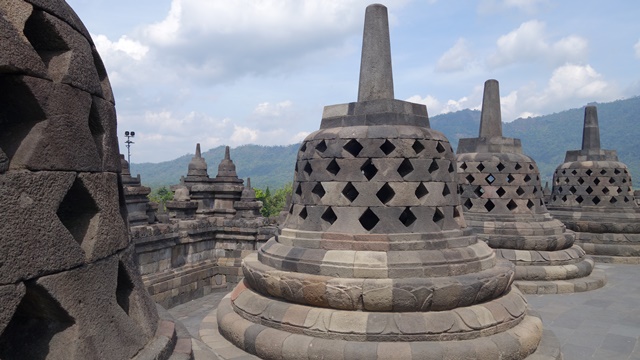Russian Scientists Unravel Mysteries of Indonesia Mud Disaster
3D subsurface imaging reveals inner workings of mud volcano
MOSCOW, RUSSIA: July 30, 2010: A team of Russian scientists has announced the completion of an intensive study of the baffling mud eruption that has inundated several villages in East Java, Indonesia, causing loss of human life, extensive destruction of infrastructure and displacing tens of thousands of residents. Led by Dr. Sergey V. Kadurin, a senior lecturer at Odessa University, the team was comprised of leading scientists from the Russian Institute of Electro Physics. The study, conducted in close cooperation with Indonesian authorities, will allow a fuller understanding of the mechanism of this disaster with a view of preventing or at least mitigating any other such disasters in the future. The research report will be published by Moscow University in August, 2010.
Visits in 2007 by Indonesian President Susilo Bambang Yudhoyono to Russia and Russian President Vladimir Putin’s to Indonesia opened a new page in mutual cooperation between the two countries in political, economic and scientific fields. In the scientific area, particularly in geophysics, seismology and mud volcanoes, Indonesian and Russian scientists have evinced great interest in the phenomenon of the ongoing mud eruption in East Java.
The mud eruption, known familiarly as LUSI (a combination of the Indonesian word for mud, lumpur, and Sidoarjo, the town where the eruption occurred) began suddenly on May 26, 2006, spewing hot mud over a wide area of densely populated countryside, creating a huge mud pond. The eruption has continued virtually unabated since that time, ejecting over 150,000 cu meters of material daily. Tens of thousands of residents of the area were forced to flee when their homes were inundated by the flowing mud.
Several scientific investigations into the eruption have since been published, with varying theories on the cause and prognosis for stopping the flow. One study theorized that the drilling of a nearby gas well was the cause of the eruption, while another pointed to a powerful 6.3 earthquake 185 km away in Yogyakarta, Central Java two days prior to the eruption as the cause.
According to Dr. Kadurin, however, all previous studies have been based upon incomplete understanding of the geophysical landscape surrounding LUSI. Through the use of seismic data (produced between 2003- 2006) the Russian scientists, using specialized computer analysis and satellite technology, undertook a detailed process of mapping the subsurface structure to a depth of 5000m. The result was the construction of a geo information system (GIS), through which Dr. Kadurin?s team has been able to virtually see inside the eruption area utilizing the latest in 3D imaging technology.
By doing the 3D imaging, we can ultimately prove or disprove the various theories that have been floating around about LUSI these past four years, said Dr. Kadurin. Not only does the 3D imaging identify the subsurface reservoir from which mud is flowing, but it also shows us the mechanism by which the material is transmitted to the surface of the earth. In addition, by using the seismic data provided by the Indonesian Government, the team would be able to conclusively identify the cause of the eruption.
Dr. Karudin points out that it is critically important to understand the dynamics of LUSI in order to predict possible future eruptions in the area of other similar volcanoes. We hope that our research can provide the basis for the continued study of this very volatile area by other scientists and help avert other similar disasters in the future, he said.
Dr. Karudin is one of the world’s foremost experts in the phenomenon of mud volcanoes and has conducted extensive research in the Central Asia area, which is rife with hundreds of such volcanic mud eruptions. Mud volcanoes are very similar to the more commonly known magmatic volcanoes, except that instead of spewing hot magma, the material ejected is hot mud. "We welcome the studies done by the Russian science institutions, who are very advanced in their earth science technology and expertise. We look forward to their technology that can help Indonesia understand the subsurface events that are occurring at Sidoarjo and are grateful for their careful analysis," said Sidoarjo Mudflow Handling Agency (BPLS) Deputy Director Professor Hardi Prasetyo.
While full details of the results of the research will be revealed only in the published report, sources close to the team indicate that some of the more intriguing findings are that LUSI is the reactivation of an old mud volcano structure that was formed thousands of years ago, and that the current eruption was triggered by a series of seismic events that began some 10 months before LUSI erupted. There are indications that such eruptions have occurred perhaps every 100-150 years many times before within the same region.
The team’s research report on LUSI has been verified by a team of 20 independent senior scientists from the Russian Geological Research Institute (VSEGEI), (the Russian Government’s highest authority managing geological issues), which was created in 1882 in St Petersburg, Russia.
For more information, please contact: Dini Endiyani Ogilvy Public Relations Ph. +62 21 526 6261 Fax. +62 21 526 6264 Hp. +62 21 813 1815 6210 E-mail: dini.endiyani@ogilvy.com







